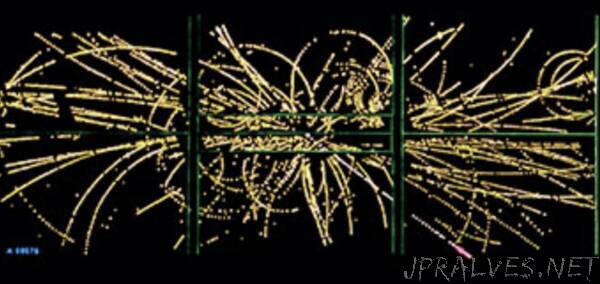
“Forty years ago today, physicists at CERN announced to the world that they had discovered the electrically charged carrier of the weak force, one of nature’s four fundamental forces
Exactly four decades ago today, on 25 January 1983, physicists at CERN announced to the world that they had observed a new elementary particle – the W boson. Together with its electrically neutral counterpart, the Z boson, which was discovered later in the same year, the electrically charged W boson mediates the weak force, one of nature’s four fundamental forces.
Through this force, the W boson enables the nuclear fusion reaction that powers the Sun, without which life as we know it would not be possible. The W boson is also responsible for a form of radioactivity, called radioactive beta decay, that is widely used in medicine.
The W boson’s discovery was the result of an idea proposed in 1976 by Carlo Rubbia, Peter McIntyre and David Cline. The trio of physicists suggested converting CERN’s largest accelerator at the time, the Super Proton Synchrotron (SPS), from an accelerator of protons into a machine to collide protons and antiprotons (the protons’ antimatter equivalents) at a high enough energy to produce W and Z bosons. Together with Simon van der Meer’s ingenious “stochastic cooling” technique, which made it possible to reduce the size and increase the density of a proton and, later, an antiproton beam, this bold idea allowed the UA1 and UA2 experiments that were built around the converted SPS to begin hunting for the W and Z bosons in 1981.
Two years later, in a seminar on 20 January 1983 held in CERN’s Main Auditorium, Rubbia, spokesperson of the UA1 collaboration, revealed six candidate collision events for the W boson. The following afternoon, Luigi Di Lella of the UA2 collaboration presented four candidate W events and, on 25 January 1983, CERN delivered the news of the discovery of the new particle to the world.
And if that wasn’t enough to celebrate and crown the success of the converted SPS, the W boson discovery was followed a few months later by that of the Z boson, indirect evidence for which had been obtained a decade earlier at CERN’s Gargamelle bubble chamber.
The observations of the W and Z bosons further confirmed the theory of the electroweak interaction that unifies the electromagnetic and weak forces and demands the existence of the Higgs boson, which was found at the Large Hadron Collider (LHC) in 2012. Developed in the 1960s by Sheldon Glashow, Abdus Salam and Steven Weinberg and cemented in the 1970s by Gerard ‘t Hooft and Martinus Veltman, this theory is now a cornerstone of the Standard Model of particle physics.
The W and Z discoveries were recognised with the 1984 Nobel Prize in Physics for Rubbia and Van der Meer, and helped secure the decision to build CERN’s next big accelerator, the Large Electron–Positron Collider (LEP), which went on to study the W and Z bosons in detail.
Forty years on, and after many investigations at LEP and other colliders, including the LHC, the W and Z bosons continue to show their stripes and provide physicists with new ways of exploring the properties and behaviour of matter at the smallest scales.
To give a couple of examples, in 2021 the ATLAS collaboration reported the observation of the rare simultaneous production of three W bosons, and CMS obtained a high-precision measurement of the transformation of Z bosons into invisible particles. And in 2022, based on data collected by the former Tevatron accelerator, the CDF collaboration announced the most precise ever measurement of the W boson mass. However, the CDF W boson mass value is in tension with previous results, including the first at the LHC by ATLAS and LHCb, calling for new measurements with increased precision.
Research into these and other facets of the W and Z bosons will continue at the LHC and its planned upgrade, the High-Luminosity LHC.”
